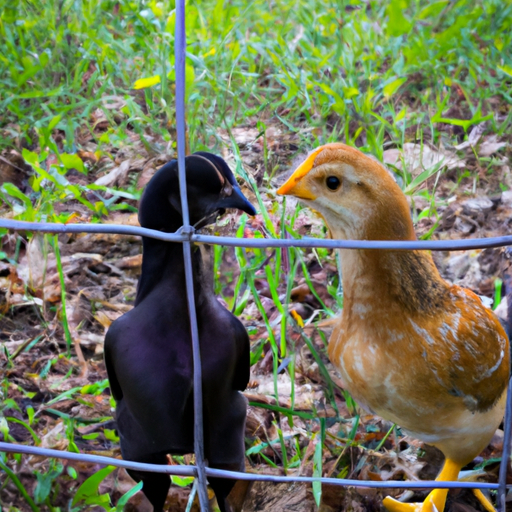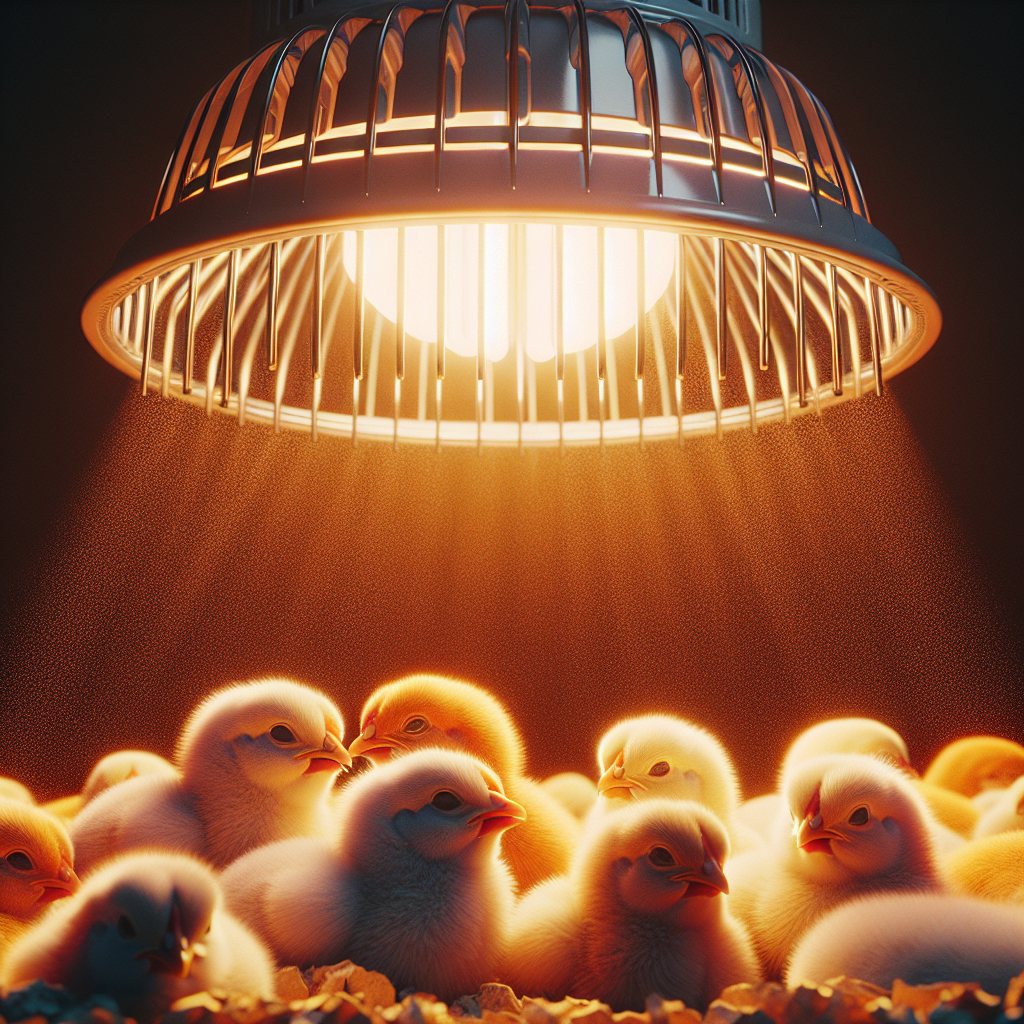So, you’ve recently acquired some adorable baby chickens and now you’re faced with the challenge of introducing them to your existing flock of feathery friends, without causing any major feathers to be ruffled. It’s important to approach this process with caution, as introducing new members to an established flock can sometimes lead to aggression and territorial disputes. In this article, we’ll explore some tips and strategies to help you safely introduce your baby chickens to your existing flock, ensuring a harmonious and happy coexistence amongst all your beloved feathered companions.
Preparing for Introduction
Creating a Separate Space
Before introducing baby chickens to an existing flock, it’s essential to create a separate space for them. This will ensure that the new chicks have a safe and secure environment where they can grow and acclimate to their surroundings. The separate space can be a brooder box or a small coop specifically designed for young chickens. Make sure the space is clean, adequately ventilated, and equipped with bedding, food, and water.
Ensuring Proper Nutrition
Proper nutrition is crucial for the health and development of baby chickens. Before their introduction to the existing flock, it’s important to provide them with a well-balanced diet that meets their specific nutritional needs. High-quality chick feed with the right amount of protein, vitamins, and minerals is essential for their growth. Additionally, offering clean water at all times is crucial to keep them hydrated and healthy.
Providing Adequate Shelter
Another key aspect of preparing for the introduction is providing adequate shelter for the baby chickens. This includes ensuring that their brooder box or coop is secure from predators and elements. Make sure there are no gaps or openings that could allow predators to enter and harm the chicks. Adequate heating and insulation should also be provided to maintain a comfortable temperature, as young chicks are particularly sensitive to extreme temperatures.
Gradual Introduction Methods
Using Age-Appropriate Chicks
When introducing baby chickens to an existing flock, it’s important to ensure that the chicks are age-appropriate. Ideally, the chicks should be similar in size and age to the existing flock to avoid any significant disparities that could lead to aggression or injuries. Young chicks are more vulnerable and may not be able to defend themselves against older, more dominant chickens.
Visual Introduction
A successful gradual introduction method involves allowing the existing flock to observe the baby chickens from a safe distance without direct physical contact. This helps in familiarizing them with each other’s presence and reduces the chances of aggressive behavior. A wire mesh or transparent barrier can be used to separate the new chicks from the existing flock, allowing visual interaction while ensuring safety.
Parallel Fencing
Parallel fencing is another effective method for gradually introducing baby chickens to an existing flock. This involves setting up temporary fencing that allows the two groups to see and hear each other while maintaining a physical barrier. Over time, the fence can be gradually lowered or removed, allowing closer interaction while still providing a level of separation. This method allows the chickens to become familiar with each other’s presence without direct physical contact.
Supervised Interactions
Monitoring Body Language
During the supervised interactions between the baby chickens and the existing flock, it’s crucial to closely monitor their body language. Observe how the chickens interact with each other, looking for signs of aggression or stress. Hostile body language, such as raised hackles, pecking, lunging, or puffing up, can indicate potential conflicts. On the other hand, relaxed and friendly body language, such as calm postures and non-aggressive behavior, indicates positive interaction.
Intervening in Aggression
In cases where aggression occurs during supervised interactions, it’s important to intervene promptly to prevent injuries or escalating conflicts. Separate any aggressive chickens from the group and place them in a time-out area. This will help discourage aggressive behavior and protect the safety of the baby chickens. However, it should be noted that some level of pecking order establishment is normal during introductions, as the existing flock establishes dominance.
Separation if Necessary
If the supervised interactions become consistently aggressive or excessively stressful for the baby chickens, it may be necessary to separate them from the existing flock temporarily. Providing the baby chickens with their own separate space allows them to grow stronger and more confident before attempting further integration. This separation period allows them to mature and develop enough size and strength to better handle interactions with the existing flock.
Integration Techniques
Combining Flocks
Once the baby chickens have reached an appropriate size and strength, and they’ve become more familiar with the existing flock, it may be time to consider combining the two groups. The integration process can be done by gradually merging the two flocks in a controlled manner. This can be achieved by physically placing the baby chickens among the existing flock and closely monitoring their interactions. This method allows for natural socialization and pecking order establishment.
Short-Term Supervised Integration
Short-term supervised integration involves periodically allowing the baby chickens and the existing flock to interact under close observation. This can be done by allowing the two groups to free-range together for short periods or by providing supervised communal areas. Regularly observing their interactions will help identify any potential issues and allow for prompt intervention if needed. The duration of these supervised integration sessions can gradually be increased as positive interactions continue.
Long-Term Integration
Long-term integration involves allowing the baby chickens and the existing flock to coexist harmoniously without direct supervision. This stage can only be reached once the chickens have been successfully integrated during the short-term supervised interactions. However, it’s important to continue monitoring their interactions periodically to ensure that any new conflicts or issues can be addressed promptly. Remember that the adjustment period for complete integration may take weeks or even months, so patience is key.
Avoiding Common Issues
Avoiding Overcrowding
Overcrowding can lead to stress, aggression, and increased risk of disease transmission among the chickens. To avoid these issues, ensure that the coop or outdoor space provides enough room for each chicken to comfortably move around without feeling cramped. Providing adequate space ensures healthier and happier chickens, reducing the chances of conflicts during the introduction process.
Preventing Disease Transmission
Disease transmission is a significant concern when introducing baby chickens to an existing flock. To prevent the spread of diseases, it’s crucial to maintain strict biosecurity protocols. This includes regularly cleaning and disinfecting the coop, ensuring proper ventilation, and quarantining any new birds before introducing them to the existing flock. Additionally, regularly monitoring the health of all the chickens and promptly addressing any signs of illness will help prevent the spread of diseases.
Managing Disparities in Size and Strength
When introducing baby chickens to an existing flock, it’s important to manage any significant disparities in size and strength. Ensuring that the baby chicks have grown enough to be able to defend themselves against larger and more dominant chickens is crucial for their safety. Gradual introduction methods, such as visual introductions and parallel fencing, help familiarize the two groups without exposing the baby chickens to physical harm.
Observing and Ensuring Well-being
Monitoring Eating and Drinking
Regularly observing the baby chickens and the existing flock during the introduction process allows you to ensure that all the chickens are getting enough to eat and drink. Competition for food and water can lead to stress and aggression, so it’s important to provide plenty of access points to food and water sources. Make sure that all chickens, regardless of size, can easily reach these resources and monitor their eating and drinking behavior for any signs of abnormalities.
Keeping an Eye on Injuries
During the introduction process, it’s essential to keep a close eye on any signs of injuries among the baby chickens and the existing flock. While some pecking and minor skirmishes may occur during the establishment of the pecking order, severe injuries should be promptly addressed. Separate any injured chickens for treatment and monitor the progress of their healing. It’s important to provide a safe and stress-free environment for injured chickens to recover.
Assessing Stress Levels
Stress can have a negative impact on the overall well-being of chickens, so it’s vital to assess their stress levels during the introduction process. Signs of stress can include abnormal behavior, decreased appetite, feather pecking, or excessive vocalization. If any chickens display persistent signs of stress, it may be necessary to adjust the introduction process or provide them with additional time and space to acclimate.
Conclusion
Success in Integration
Successfully introducing baby chickens to an existing flock requires patience, careful planning, and gradual integration techniques. By providing a separate space, ensuring proper nutrition, and gradually introducing the two groups, you increase the chances of a successful integration process. Monitoring interactions, intervening in aggression, and separating if necessary are crucial steps in ensuring the safety and well-being of all the chickens involved.
Ongoing Observation and Care
Even after the baby chickens have been successfully integrated into the existing flock, ongoing observation and care are necessary to maintain their well-being. Regularly monitoring their eating and drinking habits, keeping an eye on injuries, and assessing stress levels will help ensure that the chickens are thriving in their new social environment. By providing ongoing care and addressing any issues promptly, you can foster a harmonious and healthy flock.




